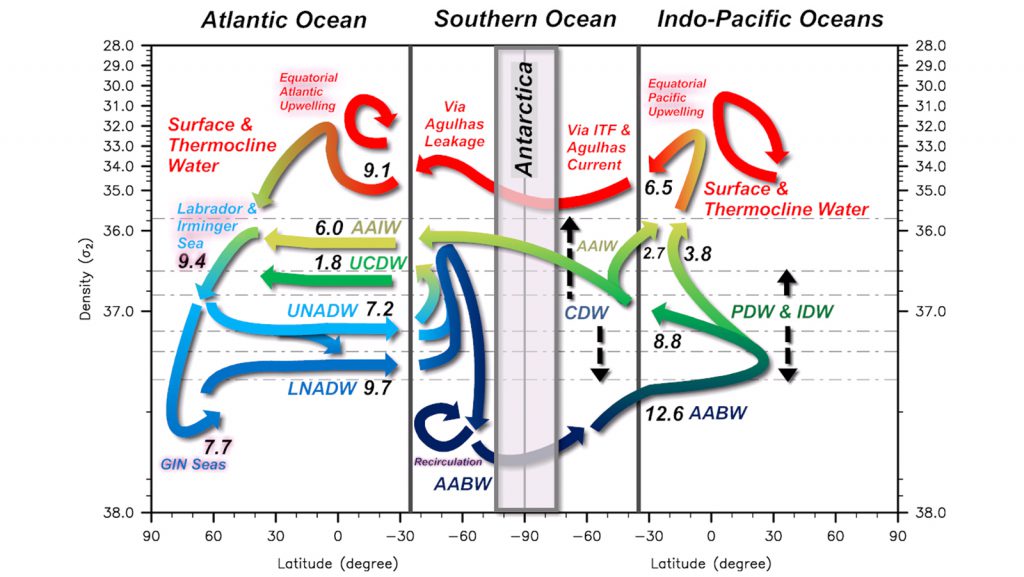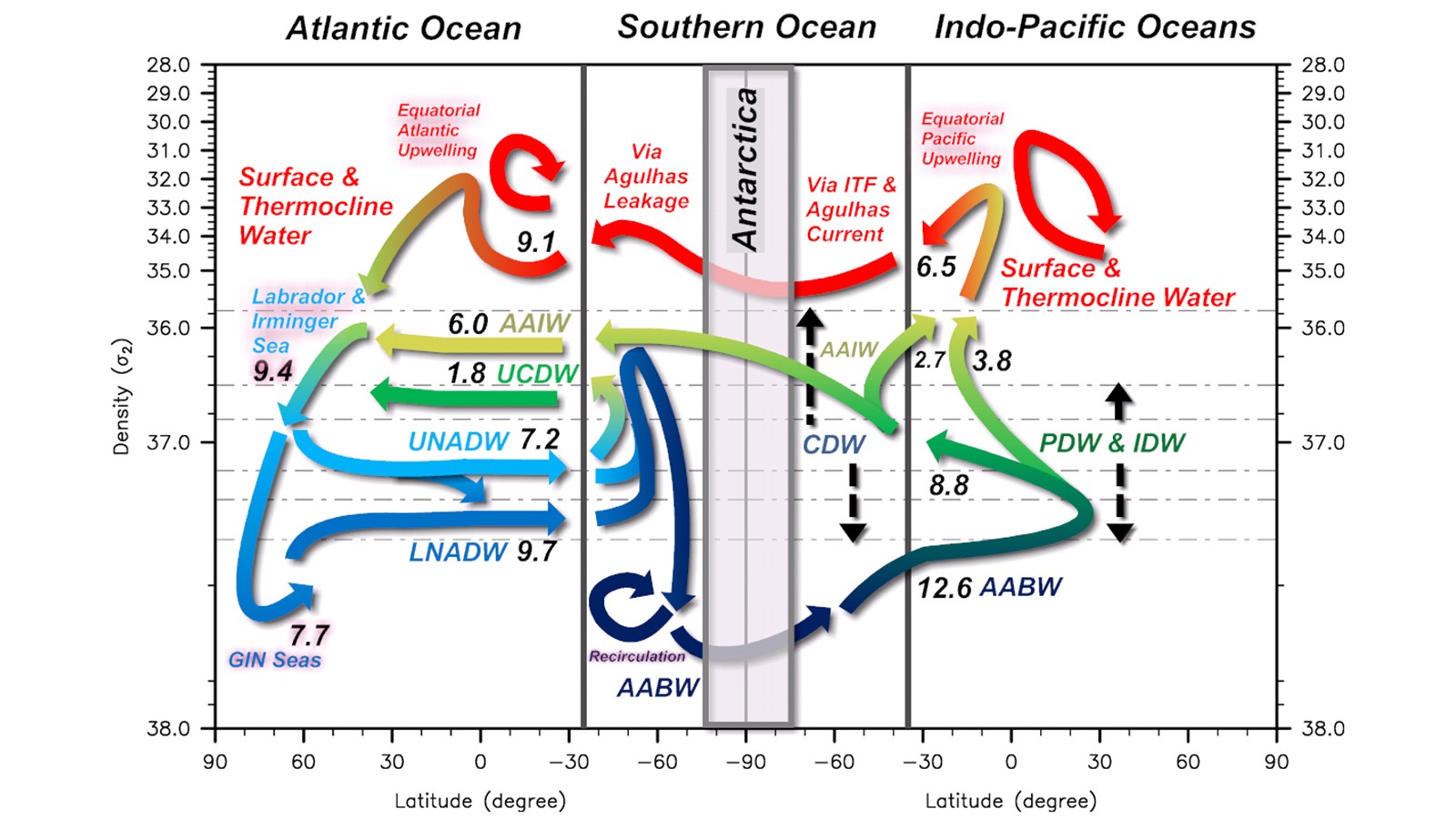
Ocean tracers such as heat, salt and carbon are perpetually carried by the global meridional overturning circulation (GMOC) and redistributed between hemispheres and across ocean basins from their source regions. The GMOC is therefore a crucial component of the global heat, salt and carbon balances. In a new article published in Geophysical Research Letter (Lee et al., 2019), Sang-Ki Lee and his team from NOAA/AOML, CIMAS/University of Miami and NCAR revisited our current understanding of the GMOC by using a global ocean model simulation with its temperature and salinity corrected toward observations. This study presents the derived GMOC, validates it against observations and summarizes in a schematic, which highlights several important but relatively under-explored aspects of the GMOC, including the pathway through which the heaviest water mass formed around the Antarctica is brought to the surface. The study further shows that some key aspects of the GMOC are poorly captured in a model run without the temperature and salinity corrections, suggesting that current climate models do not reproduce realistic paths of the GMOC and the associated global heat, salt and carbon balances.
